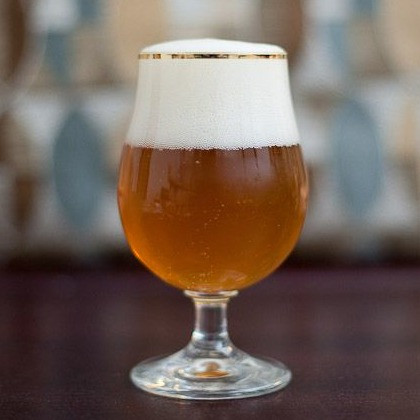Copy Link
Add to Bookmark
Report
HOMEBREW Digest #0343

This file received at Mthvax.CS.Miami.EDU 90/01/24 04:04:14
HOMEBREW Digest #343 Wed 24 January 1990
FORUM ON BEER, HOMEBREWING, AND RELATED ISSUES
Rob Gardner, Digest Coordinator
Contents:
(Re-)Using spent grains -- an article summary (Chris Shenton)
Lagers (jamesb)
Brewpubs in Bay Area (Tom J Farish)
re: yeast storage and SNPA yeast (florianb)
Re: Homebrew Digest #342 (January 23, 1990) (Steve McEvoy)
Hops and downs of making beer... (Andrew Migliore @ Context x437)
Seattle Brewpub Update (Norm Hardy)
Send submissions to homebrew%hpfcmr@hplabs.hp.com
Send requests to homebrew-request%hpfcmr@hplabs.hp.com
Archives available from netlib@mthvax.cs.miami.edu
----------------------------------------------------------------------
Date: Tue, 23 Jan 90 10:58:03 est
From: Chris Shenton <chris@asylum.gsfc.nasa.gov>
Subject: (Re-)Using spent grains -- an article summary
[sorry about the last, truncated version]
From Zymurgy All Grain Issue: V8, #4, 1985. ``Do Not Waste Your Grains''
Clifford T. Newman Jr.: P.O. Box 193; Port Matilda, PA 16870
CAVEAT
A brief statement indicates he's using pale malt, and he doesn't say
anything about other kinds of grains. What about a stout-grain bread?
STORAGE
He dehydrated the spent grain for storage by baking at 200F -- stirring
every half hour -- until dry. Then stored in well sealed containers; long
shelf-life.
He uses the fresh (moist) grains immediately in the following recipes, but
says the dried grain can be ground into flour. He says that to use the dry
grain add one half cup of water for every four cups of grains in the
recipe; he doesn't indicate whether it is flour at this point...
COOKIES
His cookies turned out to be losers.
BREAD
High fiber bread was a success: slightly sweet, light tan in color and
medium in texture.
4 C fresh spent grains
1 C water
1/2 C oil
1/2 C sugar
1/4 tsp salt
1 tbs dry baker's yeast
All-purpose flour -- enough to make a stiff dough
Blend gains and water in blender or food processor for 30 seconds.
Place in large mixing bowl and add oil, sugar, salt, and stir in yeast.
Add flour until you have a thick, workable dough.
Put in a warm place to rise until doubled in size.
Knead dough and divide into three greased loaf pans.
Let the dough double in size again.
Bake in a preheated oven at 350F for one hour and 15 minutes.
Remove from oven and cool on wire rack.
GRANOLA
Sweet, high in fiber, and his children enjoyed it.
6 C fresh spent grains
4 C raw sunflower seeds
2 C wheat germ
1 C bran
1 1/2 C non-fat dry milk
2 tsp salt
3 tbs cinnamon
3/4 C molasses
1/2 C honey
3 tbs vanilla extract
2 C coconut
2 C raisins
2 C chopped cashews
Combine first seven ingredients in a large bowl and mix well.
Blend molasses, honey and vanilla in a small bowl, then mix into grains.
Spread 1/2 inch deep on large baking pan.
Bake at 250F until light brown, stirring occassionally.
Turn onto paper-covered surface.
Mix last three ingredients and combine with granola.
Store in tightly sealed containers.
------------------------------
Date: Tue Jan 23 14:53:22 1990
From: microsoft!jamesb@uunet.UU.NET
Subject: Lagers
We have succesfully completed a simple Ale, an Oatmeal Stout
and an Xmas Ale. The next step is a Lager.
I am sending the request out for your favorite Lager.
Please send me the recipes and a breif description
This just gets better and better all the time!!!
Thanx To All.
Jim Broglio
Microsoft
------------------------------
Date: Tue, 23 Jan 90 13:39:30 MST
From: tjf%beta@LANL.GOV (Tom J Farish)
Subject: Brewpubs in Bay Area
Hi...I'll be in San Francisco in a couple of weeks....I'd appreciate
folks there sending me the names and address of your favourite
brewpubs. Must be easy to get to (I'll have to walk or take a taxi).
I'll be spending my days at Bechtel....
Thanks!
------------------------------
Date: 23 Jan 90 10:55:23 PST (Tue)
From: florianb@tekred.cna.tek.com
Subject: re: yeast storage and SNPA yeast
Chris Shenton asked about storing yeast slurry in the fridge. I've done
this in the past and know others who have done it in the past. I've heard
that one shouldn't do it over twice with the same yeast batch. I stored
the Wyeast Irish yeast for about two weeks recently. When I got ready to
pitch it into the starter, it stank heavily of autolyzation. Fortunately,
after dilution in the starter, the stink reduced, and I could only faintly
smell it in the raw brew when transferring out of the primary fermenter.
The finished beer doesn't seem to have the smell.
I use 1-2 qts of starter, and pour only the liquid out of the storage bottle,
leaving the sludge behind. As a starter, I use 1/4 lb of light dry extract
boiled in one qt water for 20 minutes, beginning with sufficient liquid to
obtain the 1-2 qts of starter wort. I've prepared the starter with and
without hops. It doesn't seem to make a difference.
A question regarding Sierra Nevada yeast. I recently tried to make a starter
by pitching the last 1/2" of beer from a SNPA bottle into a starter wort.
After two days of sitting on top of the fridge (my usual starter place), the
wort was looking at me like it thought I was crazy--no fermentation at all.
Does this even work, or was I wasting my time with pasteurized beer?
Thanks,
Florian.
------------------------------
Date: Tue, 23 Jan 90 22:32:25 est
From: Steve McEvoy <41642_334@uwovax.uwo.ca>
Subject: Re: Homebrew Digest #342 (January 23, 1990)
I've been receiving the homebrew newsletter (homebrewdigest) for
some time and have been very much enjoying the discussions on
yeasts, kegging etc. There has also been considerable discussion
lately on the subject of wort chillers. Bear with me if this seems
like a naive question, which it probably will although I'm not a
novice beermaker. I bought Pappazian recently and have read most
of it. Unless there's a fair bit on wort chillers in the last section
I'm at some loss as to why all the interest in wort chillers.
I'll be starting back into brewing soon, probably opting for the
modified mash and sparge routine and I'll be interested in
implementing a "cold break". From my reading however, it seems
that all that's required to acheive that is to pour hot wort
into cold water.
My question is, How temperature sensitive a process is this?
Should I be aiming for a specific temperature at which to pitch?
If so what would that be?
Again, I've tended to operate under the assumption that somewhere
around 70 degrees fahrenheit was what you needed in order to ensure
yeast survival and that that was a good starting point even if
lagering was intended ultimately.
Of course I'm interested in making better beers than I have
or I wouldn't be posting the question, but I'm a bit daunted
by the lengths (and expense) to which people are willing to go
to control temperature.
No flames please. I'd be very interested in hearing from
anyone who can enlighten me further on the subjects of temperature
control and wort chillers generally
Trying to relax and not worry..
___________________**************_______________****************_-_-_-_-
Steve McEvoy Speech Care Services
Lot 22 Lees Crescent
Carleton Place, Ontario
S.McEvoy@uwo.ca K7C 3P2
S.McEvoy@uwovax.bitnet (613) 257-8367
------------------------------
Date: Tue, 23 Jan 90 16:12:00 PST
From: hplabs!rutgers!context.mentor.com!andrewm (Andrew Migliore @ Context x437)
Subject: Hops and downs of making beer...
What's the best way of getting the most yield (bitterness) from hops?
Is boiling the hops seperate from the beer better? And how long is
long enough.
- -------------------------------------------------------------------------------
Andrew Migliore andrewm@context.mentor.com
"If I knew it was harmless, I'd have killed it myself..."
-- A Scanner Darkly
------------------------------
Date: Tue, 23 Jan 90 20:58:32 PST
From: polstra!norm@hplabs.HP.COM (Norm Hardy)
Subject: Seattle Brewpub Update
Some things have happened up here in the land of the micro-beer lately:
Noggins Brewpub (Westlake Center) has filed for Chapter 11 bankruptcy to clear
away $300,000 of debts so that new investors can bring in $3 million or so
do get the operation back on its feet. Brewer Larry Rock is cautiously
optimistic about the chances. The beers are very good now, although that
hasn't always been the case. They are using a Spaten Munich lager yeast in
some of their beers and with good effect.
Noggins Brewpub (University District) laid off brewer Craig Skelton on Jan 17
along with several staff. Pub hours have been cut back greatly. 4 pm is
the opening time and it is closed Sundays. Speculation says that this
brewpub will cease operation within two months. Cost overruns in getting
the pub open really put a damper in the accounting log. Many of the beers
were fair or down-right bad. Some, though, were excellent. Live bands were
brought in (along with a cover charge) a few months ago to try to bring in
more business. It didn't seem to help.
The Big Time Brewery (University District) had a good year in 1989. Brewer
Ed Tringali claims to have sold 935 barrels last year. He compares that to
the 1300 or so sold at the longer established partner in San Francisco.
Just 2 minutes by foot from Noggins, this place is very popular: it is less
yuppyish than Noggins and always has good clean beers. The specialty beers
are always great. Their barley-wine "Old Wooley" was exceptional.
Red Hook Brewery (Fremont), although not a brew-pub, sold an estimated 15,000
barrels in 1989. Capacity at the new brewery is 40,000 barrels, and some
speculation says that they are a little disappointed at not doing better.
Their Winterhook was a very popular beer during the holiday season.
Pacific Brewing (Pioneer Square) continues to sell the best looking beer in
town. Owner Richard Wrigley is very high on presentability in marketing his
beers. The interior of the pub/restaurant is spectacular. The beer is not.
At $2.75 for 10-14 oz of ale, the consumer is getting shortchanged. Add
$9.50 for fish and chips and you begin to understand why the place is not
jumping. The rumors here give Pacific Brewing 6 months to improve or close.
Norm Hardy in Seattle
------------------------------
End of HOMEBREW Digest #343, 01/24/90
*************************************
-------





















